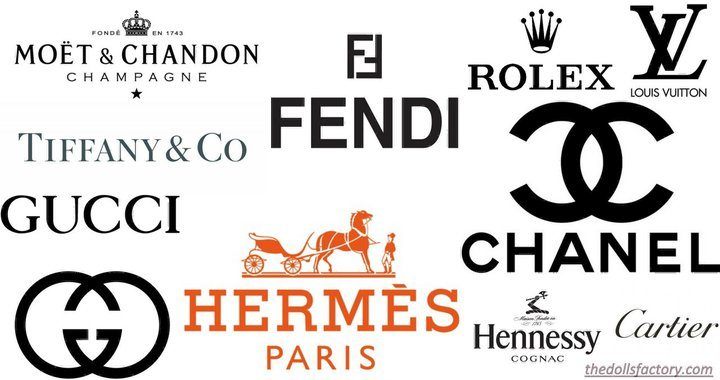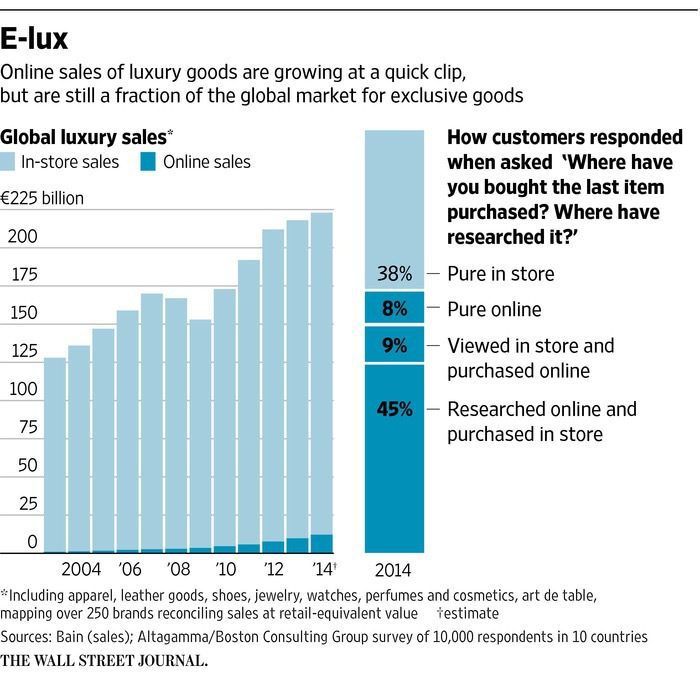Luxury digital
The digital strategies of luxury brands run the gamut from avant-garde (Burberry) to retrograde (e.g. Celine [LVMH] and most old-fashioned watch brands, such as Vacheron Constantin & Blancpain, that refuse to do eCommerce). Whether through ignorance, fear or conservative (reactionary) thinking, luxury brands have generally been slower to move. Digital transformation for luxury brands has, for a number of reasons, been a more complicated process. Recently, however, there has been a lot of news and change in the digital luxury landscape, including the merger of Yoox and Netaporter to form an integrated luxury online player. There has also been pressure coming from the fast-paced changes in the Chinese luxury market.
When faced with a cocktail of terms such as “open,” “transparent,” and “real-time,” for the typically discrete, opaque and refined-time that characterizes many luxury brands, the digital cookie has been hard to digest. {Please tweet this!} Luxury brands are no longer being tested and benchmarked in the digital space against their peers, but against all manner of competition and distributors, including the likes of Amazon, Apple and Gilt. {Do tweet this!}
Luxury eCommerce
Among the major luxury brands to refrain from giving their customers what they want digitally (i.e. eCommerce) have been Fendi, Chanel and Celine. Fendi (LVMH) only recently acquiesced and opened up its eCommerce site in March 2015. Chanel just announced that it will open up this new channel by the end of next year. Clearly, they are in no hurry. What has been a strategic absence may turn into a strategic error in that the learning curve will remain long and steep against a competition that has been living and learning the ropes for several years. Various pundits place the eCommerce potential for luxury brands at 10-20% of total sales versus the current estimated 8%, according to this composite graph below via the Wall Street Journal (Bain and Altagamma/BCG).
Whether it is in terms of user experience, social media or customer service, the luxury brands must find ways to provide superior value-added services and deliver against heightened expectations set by the lower-priced competitors. {Tweet this!}
Digital transformation for luxury brands
In this infographic, based on a survey of over 300 executives, we look at how luxury brands are facing the digital transformation challenge. In terms of digital strategy, the role of leadership, digital marketing budget and social media, we see how luxury brands have been or are planning to navigate the transformation journey differently from the other segments.
This infographic is part of a series on digital transformation.
- “Winning at Digital Transformation,” which looks at the role of leadership in the digital transformation process.
- “Digital Transformation – More than resources, a mindset.” This infographic looks at the allocation of resources for digital, with some benchmarking as well as how companies view and are taking on the digital opportunities.
You can also download the above “Digital Transformation for Luxury Brands” infographic as a PDF here. And a final thanks to my graphic artist, Renaud Ramaud, who produced this piece.














Nice article with a pointed view of the slowness of luxury digital brands embracing digital.
Thanks for your post about luxury digital transformation. Great article!
I am somewhat surprised at the numbers you quote in your infographic, that would mean that some luxury brands have actually addressed digital. Or would that survey be more of what the 300 execs say rather than do?
My feeling is that most of them still do a very bad job at making digital work for them, and would really need to up their game with more investments and resources in the following areas:
1 – Digital CRM: Getting to know their core customers better, so they can tailor proper 1to1 experiences that would go beyond what anyone does already. Intimacy with their best customers is what some luxury brands should aim for, making them their ambassadors… in the same way 5-star hotels have intimate knowledge of their best customers…
2 – eCommerce: What a miss for some luxury brands not willing to be serious about eCommerce! Is that the fear of competing with their traditional partners (Selfridges, Galeries Lafayette, etc..)? In the same way record companies missed the train in the late 90’s, luxury brands seem to be missing the point about what multichannel could bring them: more traffic, more footfall, more loyalty and surely enough less counterfeit products being sold around the world… not to mention the extended knowledge they would gain about their customers and brand advocates… (see point 1)
3 – Multichannel user experience: Considering the growing volumes of RoPo sales in luxury, there is a massive opportunity for them to create best-in-class multichannel journeys for their customers (a sort of VIP click & collect experience)… Also using some retail best practice in enabling real time stock control to use the retail stores as virtual stock…
There are probably many more “best practices” luxury retails should use and adapt from “mass consumer” retail, but that would require them to be open to new type of leadership, outside of the usual luxury network.